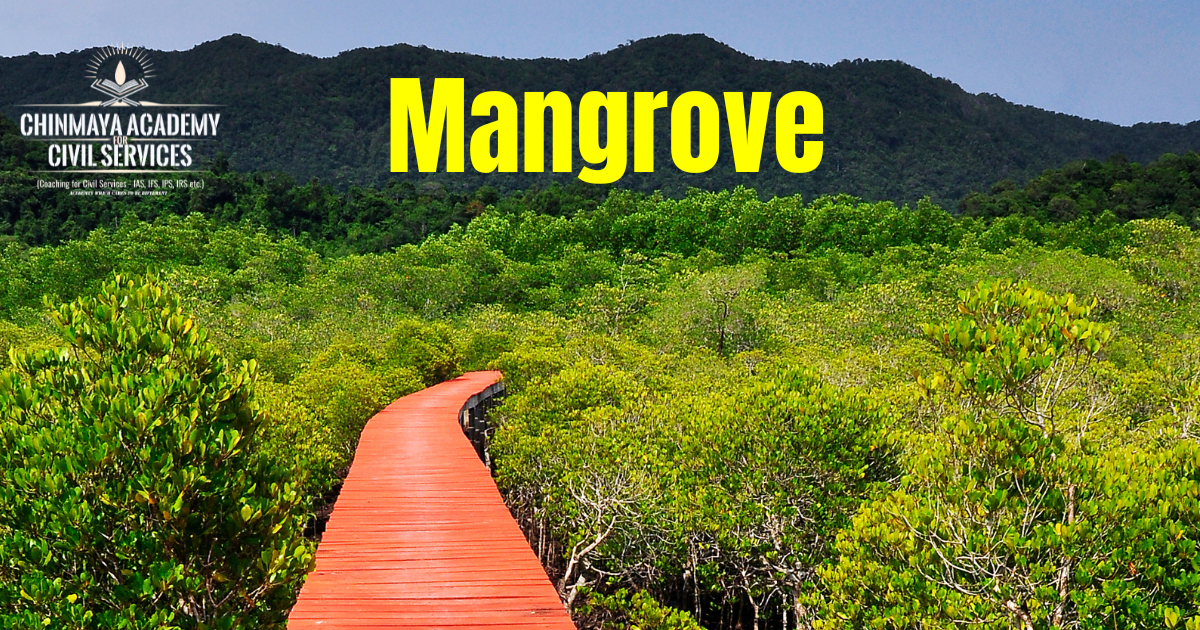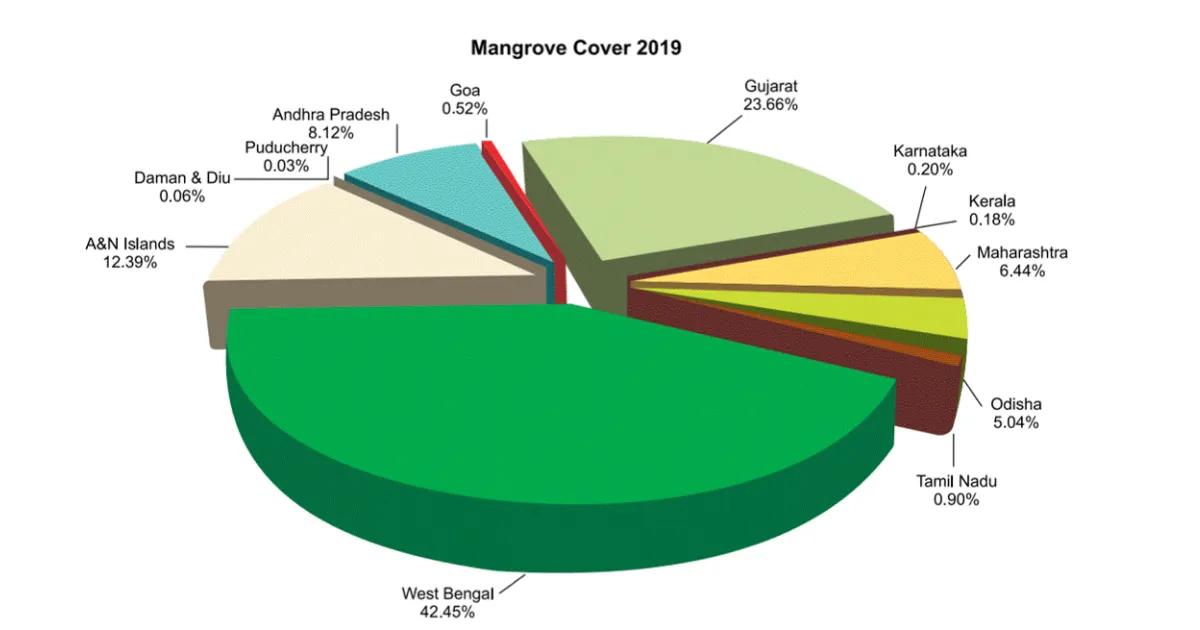
Mangroves have made headlines for several reasons recently, highlighting their growing importance in environmental concerns and development projects. Here are some of the key issues:
- Destruction for development: Mangroves are often cleared for shrimp farms, agriculture, and infrastructure projects, leading to habitat loss and ecosystem degradation. A recent case in India involved the Bombay High Court’s approval for cutting 20,000 mangrove trees for a bullet train project, sparking concerns about balancing development with environmental protection.
- Climate change: Rising sea levels and extreme weather events threaten mangrove ecosystems. A study published in Nature Communications suggests a glimmer of hope, finding that economic development and improved agricultural productivity can lead to reduced deforestation in some areas.
- Pollution: Mangroves are vulnerable to pollution from land and water sources, impacting their health and the fish and shellfish that depend on them.
Mangroves in India
Mangroves are salt-tolerant plants, specifically shrubs and trees, that can survive and flourish in the intertidal zone of tropical and subtropical coasts. This means they live in areas where land meets the sea, facing daily fluctuations in water levels due to tides.
Distribution and Extent
- India boasts around 4,975 sq km of mangroves, constituting 0.15% of its landmass.
- The lion’s share, 42.45%, lies in West Bengal, with the iconic Sundarbans holding the title of the world’s largest single-block mangrove forest.
- Other significant mangrove regions include
- Gujarat (23.66%)
- Andaman and Nicobar Islands (12.39%)
- areas around the deltas of major rivers like Ganges, Mahanadi, Krishna, Godavari, and Cauvery.

Importance and Benefits
Mangroves play a vital role in the Indian ecosystem, serving as:
- Coastal protection: Their dense roots act as natural barriers against cyclones, storm surges, and erosion.
- Biodiversity haven: They provide a unique habitat for a variety of plants and animals, including the endangered Royal Bengal tiger, Irrawaddy dolphin, and numerous fish and bird species.
- Water filtration: They naturally filter pollutants and improve water quality.
- Carbon sequestration: Mangroves store significant amounts of carbon dioxide, contributing to climate change mitigation.
- Livelihood source: They support fishing communities and provide various resources like timber, honey, and medicinal plants.
Challenges and Conservation
Despite their importance, mangroves face several threats:
- Habitat loss: Conversion for agriculture, shrimp farming, and infrastructure projects has led to deforestation.
- Pollution: Industrial waste and agricultural runoff contaminate the water, harming mangrove health.
- Climate change: Rising sea levels and extreme weather events pose additional challenges.
However, there are also positive developments:
- Increased awareness: The value of mangroves is gaining recognition, leading to more conservation efforts.
- Government initiatives: The Indian government has implemented various programs for mangrove protection and restoration.
- Community involvement: Local communities are playing a crucial role in mangrove conservation through education, sustainable resource use, and participatory management.
Flora and Fauna in Indian Mangroves

Indian mangroves, sprawling across 4,975 sq km, are a treasure trove of biodiversity and a testament to nature’s resilience. These fascinating ecosystems, thriving at the interface of land and sea, are home to a unique array of flora and fauna that have adapted to life in salty, brackish waters.
Flora:
Sundari (Heritier fomes)
- The dominant mangrove tree, forming dense forests, particularly in the Sundarbans.
- Its stilt roots rise above the water, providing a mesmerizing sight.
Mangrove Ferns
- These delicate ferns, like the Acrostic hum aureum, add a touch of green to the mangrove canopy, thriving in the humid environment.
Avicennia spp
- Commonly known as the grey mangrove, these salt-tolerant trees have aerial roots that help them breathe in the oxygen-depleted mud.
Carnivorous Plants
- The sundew (Drosera indica) is a rare resident of Indian mangroves, luring and digesting insects with its sticky leaves.
Fauna:
Royal Bengal Tiger
- The apex predator of the Sundarbans, this majestic animal finds refuge in the dense mangrove forests.
Irrawaddy Dolphin
- Gliding gracefully through the mangrove waterways, these playful dolphins are a delight to spot.
Saltwater Crocodile
- Lurking in the muddy waters, these formidable reptiles command respect and caution.
Mudskipper
- This amphibious fish hops and climbs on mudflats, breathing air with its gills and fins.
Mangrove Kingfisher
- Flashing vibrant colours, these birds perch on branches, scanning for prey in the water below.
Fiddler Crab
- With one large claw for waving and attracting mates, these crabs scuttle across the mudflats, adding a touch of whimsy to the mangrove ecosystem.
Beyond the Beauty
The flora and fauna of Indian mangroves aren’t just visually stunning; they play a crucial role in the ecosystem’s health. Mangrove roots trap sediments, preventing coastal erosion. They also filter pollutants and provide breeding grounds for numerous fish and shellfish species. These natural nurseries sustain coastal fisheries, supporting the livelihoods of millions.
Conservation Efforts in Action
Legislative Framework
- Indian Forest Act (1927)
- Wildlife (Protection) Act (1972)
- Environment (Protection) Act (1986): Establishes Coastal Regulation Zones (CRZs)
- Forest Conservation Act (1980
Government Initiatives:
- Ministry of Environment, Forests and Climate Change (MoEFCC): Implements various mangrove conservation programs like the National Mangrove Conservation and Management Programme.
- State-level initiatives: Many states like West Bengal, Gujarat, and Odisha have their own mangrove conservation plans and dedicated mangrove cell units.
- Scheme on Conservation and Management of Mangroves and Coral Reefs: Provides financial assistance to coastal states for mangrove protection activities.
Community-based Conservation:
- Joint Forest Management (JFM): Empowers local communities to participate in mangrove management and protection.
- Ecotourism initiatives: Generate income for communities while raising awareness about mangrove conservation.
- Mangrove Restoration Programs: Involve local people in planting and nurturing man
- grove saplings.
Research and Monitoring:
- Forest Research Institute (FRI): Conducts research on mangrove ecology, restoration, and sustainable use.
- Wildlife Institute of India (WII): Studies the impact of human activities on mangroves and suggests conservation strategies.
- Regular monitoring: Government agencies and research institutions monitor mangrove health and track changes in coverage.
Raising Awareness:
- Educational programs: Schools and colleges incorporate mangrove conservation into their curriculum.
- Public awareness campaigns: Spread awareness about the importance of mangroves through workshops, seminars, and media outreach.
- Citizen science initiatives: Engage the public in mangrove monitoring and data collection.
 Chinmaya IAS Academy – Current Affairs Chinmaya IAS Academy – Current Affairs
Chinmaya IAS Academy – Current Affairs Chinmaya IAS Academy – Current Affairs
